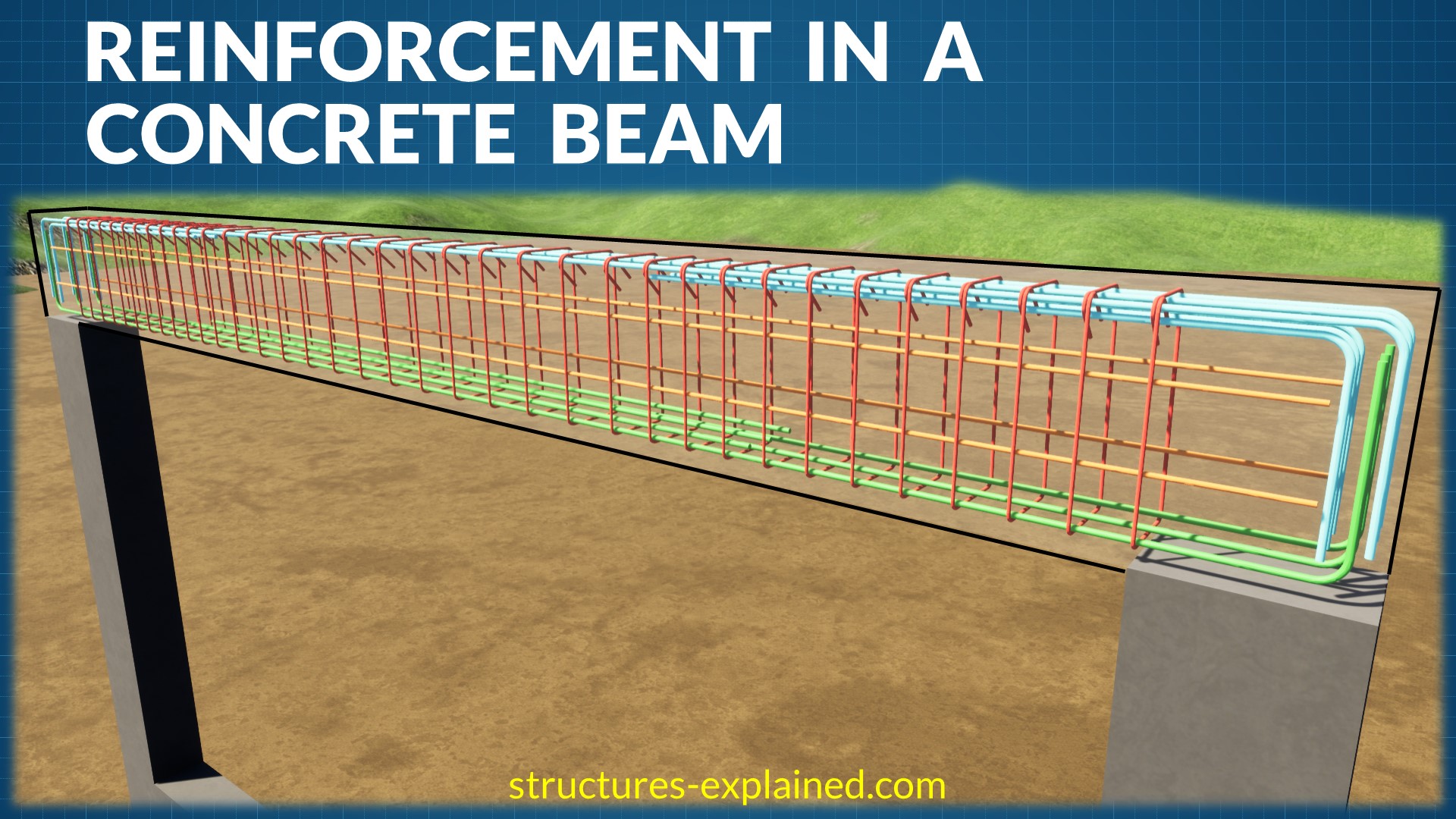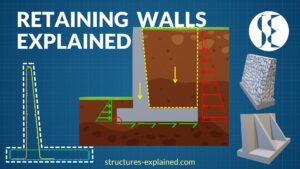In this post we will learn about about typical reinforcement detail in a concrete beam. First we will see the reinforcement distribution in a single span beam and later we will have a look at multi span or continuous beams.
Reinforcement are essential part of a concrete beam. It resists tension forces, increase the compression capacity, enhance ductility and reduce long-term deflections in the concrete. Additionally, reinforcement prevent cracking of concrete due to shear stresses, shrinkage and temperature stresses. Let’s understand the beam reinforcement one by one.
Single Span Beam

Bottom Reinforcement

In a single span beam, first we have is bottom reinforcement, which resist the beam from bending stresses. They also resist the tension cracks which occur at bottom of beam, since concrete is weak in tension. They run from column to column and have a 90-degree hook at the ends to provide sufficient anchorage. If additional reinforcement is required by design, they are provided as second layer above the bottom layer. If more additional reinforcement is required, they are added in similar way in third layer and so on.
Top Reinforcement

Top reinforcement runs from column to column and have a 90-degree hook with sufficient anchorage at the ends. Top reinforcement also resists the bending stresses produced at the supports. In case if additional reinforcement is required by design, they are provided as second layer below the top layer and are extended by one fourth of span length from face of column or as required by design.
Side Face Reinforcement

Side face reinforcement are generally provided to deep beams which have depth higher than 900 mm or 36 inches (Mentioned in code: ACI-318). This value of depth differs from code to code. Side face reinforcement runs along the sides of the beam and resist the crack width in the tension zone of concrete section. They also resist the torsional forces and resist 45-degree crack produced due to torsion. Side face reinforcement also take part in resisting axial forces along the beam. Additionally, side face bars avoid torsional buckling in deep beams and improve ductility. These bars are provided equally on both faces of the beam.
Stirrups
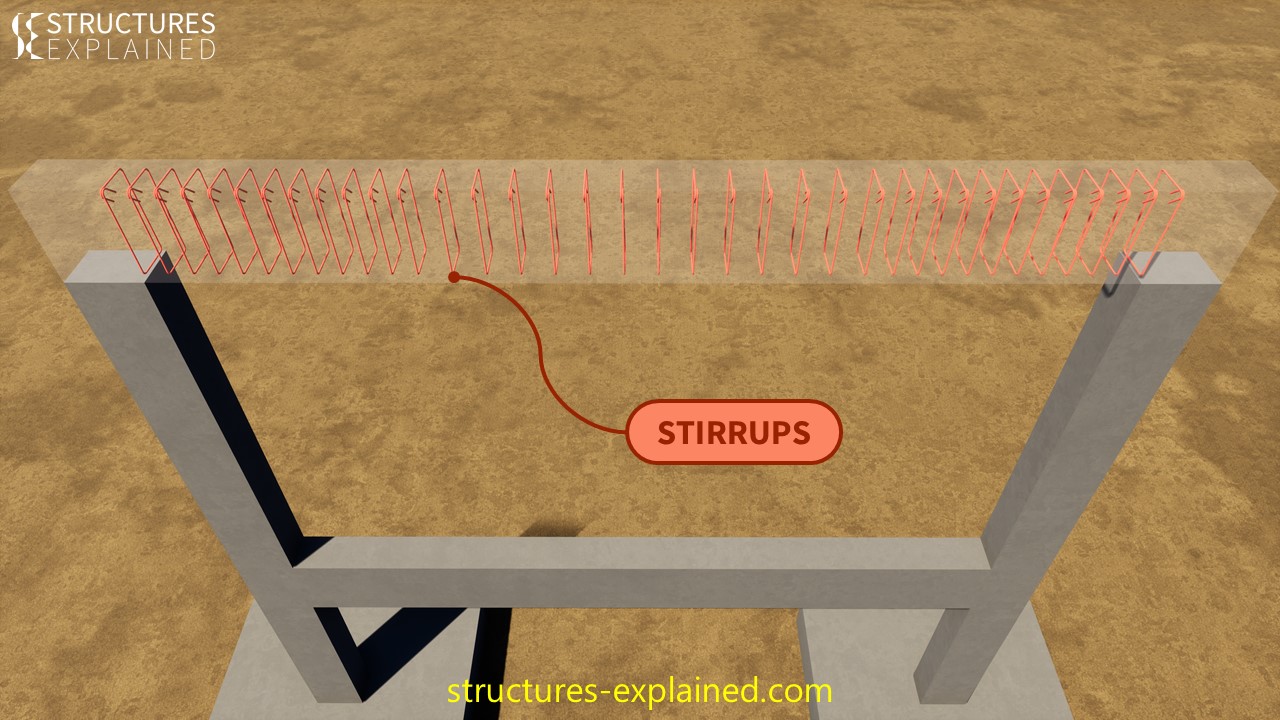
Stirrups or transverse reinforcement resist the shear stresses in the beam and hold the longitudinal reinforcement in place. Stirrups prevent the shear, flexural and torsional cracks which occur at 45 degrees to the main axis of the beam. Stirrups also add to the shear strength of concrete.
They are closely placed near the supports of the beam as shear force is maximum near supports. The closely placed stirrups must be spread at a minimum distance of 2 times the depth of the beam, but if required by design, closely spaced stirrups may be distributed along the whole length of beam.
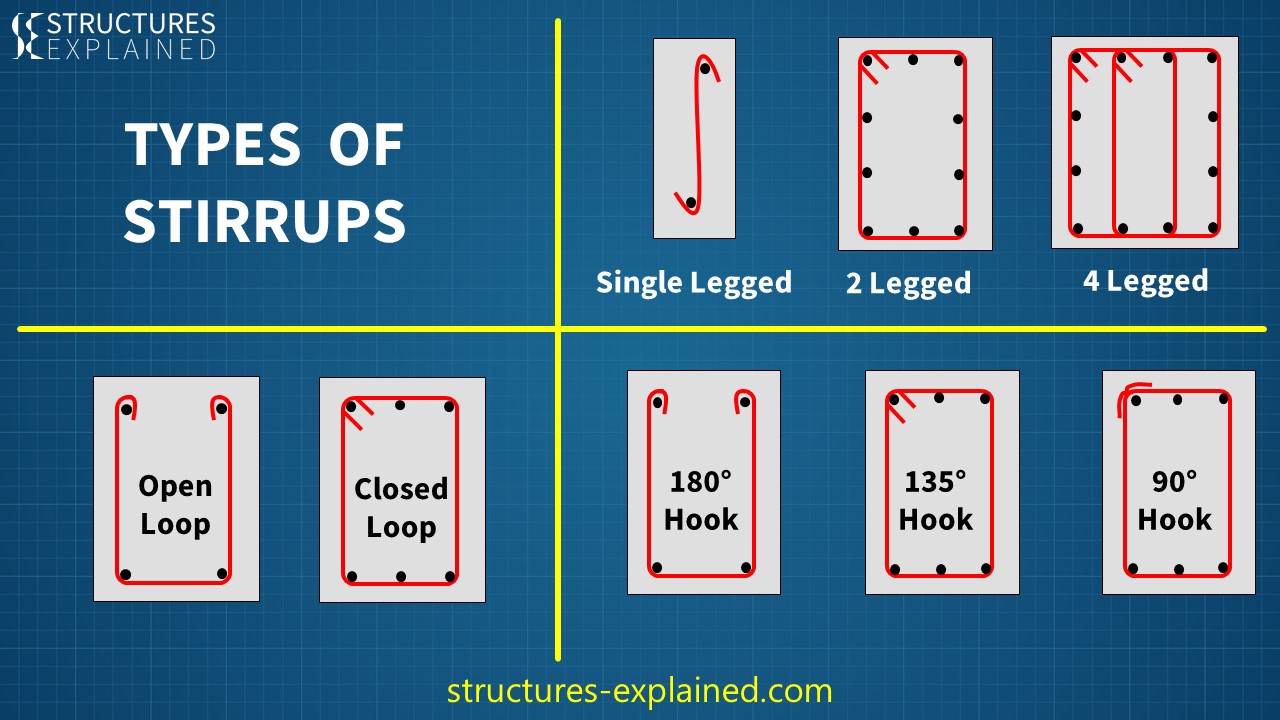
Stirrups can be classified based on number of legs they have. They can be single legged, 2 legged, 4 legged and so on. Based on the loops, stirrup can be open looped or closed looped. Lastly, based on hook angle, hooks can be 180-degree, 135-degree or 90-degree as per design requirements.
This Ends our Single span beam reinforcement. Next, we will have a look at multi span or continuous beam arrangement with a cantilever at the end.
Multi Span or Continuous Beam
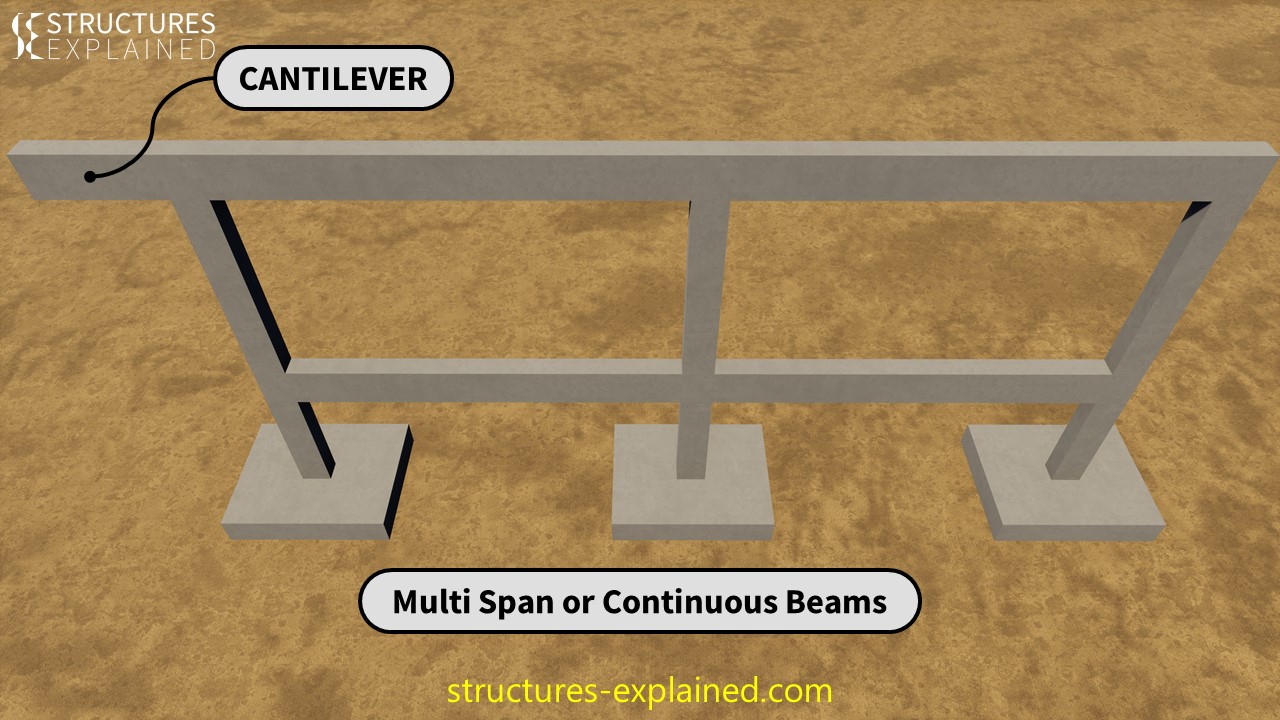
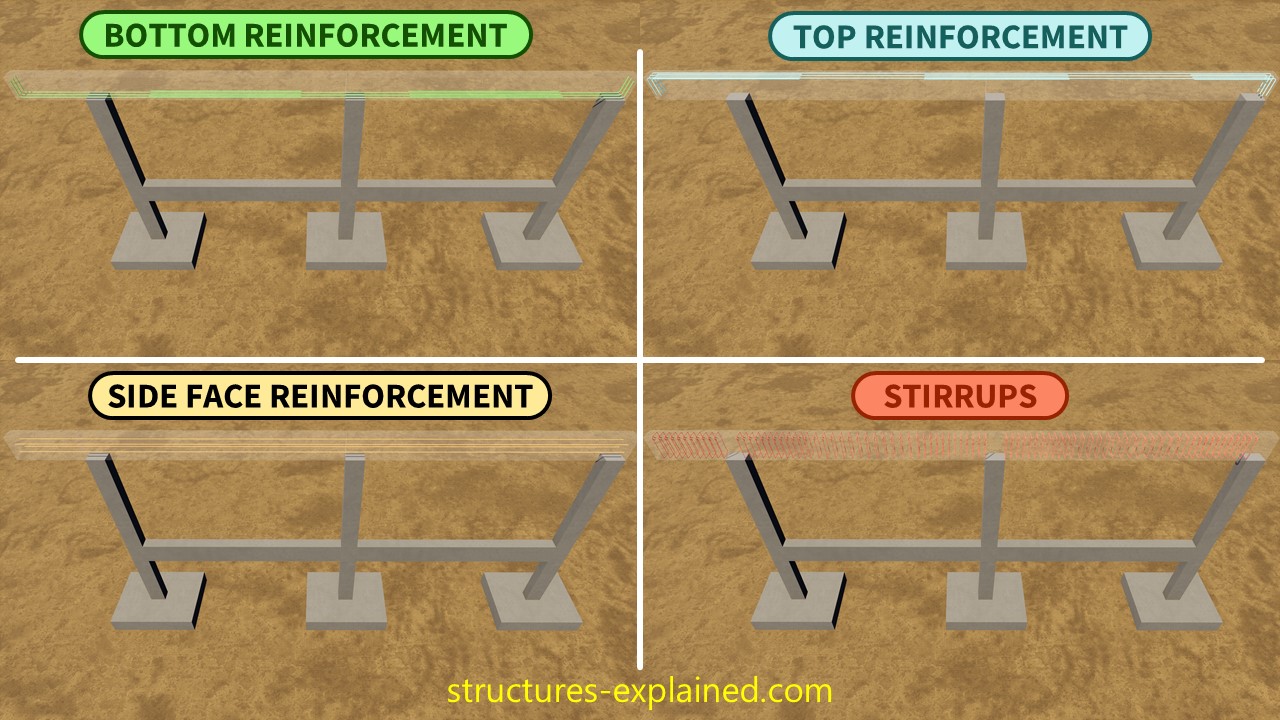
In multi span or continuous beam we have similar kind of arrangement for bottom reinforcement, top reinforcement, side face reinforcement and stirrups as in single span beam except for the intermediate junctions.
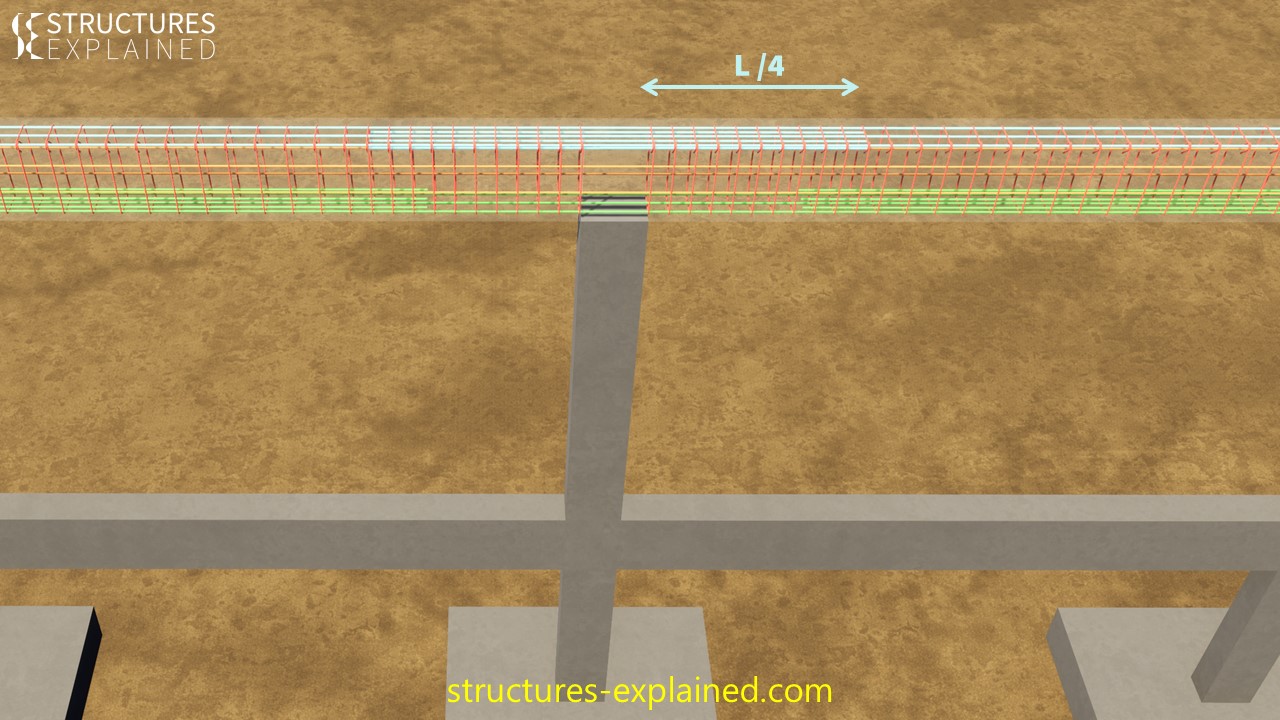
At intermediate junction the top and bottom reinforcement are extended in adjacent spans.
All the extensions are governed by design but typically the extra top bars are extended to one fourth of span length in the adjacent beam.
Cantilever Beam Reinforcement

For the Cantilever beam, the top and bottom bars from the adjacent span are continued till the end of the cantilever. Here, the stirrups are placed at closer spacing throughout the cantilever portion.
Also read 👉 Structural Elements of a Reinforced Concrete Building
Watch in Video format 👇

